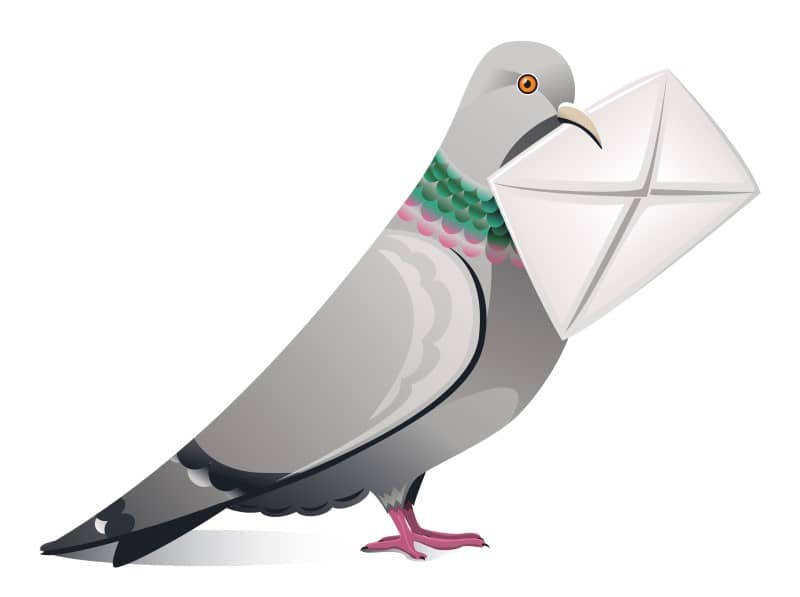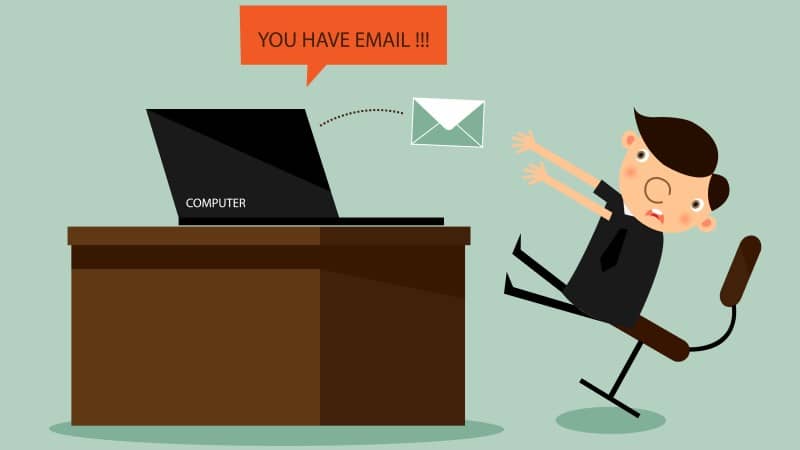It’s almost impossible to imagine what the world was like before email.

I just looked at my Gmail and I have 223,197 email conversations in my account. I set it up about ten years ago, and I delete anything that I don’t want to keep, so that works out to about 60 legitimate, important email conversations per day – every day for 10 years.
Imagine getting 60 snail-mail letters in your letterbox every morning – and being expected to respond to nearly all of them almost immediately! You would need to have a secretary to deal with it and you would probably never get anything else done. Yet 60 emails per day is nothing compared to say, my wife, who routinely deals with 200 to 300 daily.
How do we do it? And why do we keep signing up for more and more of these messages? It’s because email is one of the most efficient communication services ever devised. It’s basically free, you can respond when you feel like it, you can ignore or delete them if you want, and you can tell your boss you haven’t done any work because you’ve been ‘clearing emails’. You can also set up an autoresponder that says you’re not checking email while you’re on holiday – and check it anyway.
Because of its simplicity, email is still one of my favourite digital marketing channels. Compared to social media feeds and search engine results, an email inbox is (usually) ordered from newest to oldest, not by an algorithm which decides what content you’re most likely to click on, or a search engine that no-one knows the rules for, or an auction system that favours the largest spender.
Because the newest stuff always goes in at the top, users tend to check their email compulsively, always looking for that dopamine hit of a big win or a shock announcement, a reply to their invitation, or a payment notification for when someone buys something on TradeMe or Facebook Marketplace. For most people at work, not having an email tab open would be unthinkable. You might miss something!

This combination of simplicity, timeliness and compulsion means that email offers you the best chance of your message being seen. You’re not relying on your audience to be searching for exactly what you are offering, browsing the right news sites, watching the right videos, or flicking endlessly up and down in their social news feed.
So how do you get your message into the user’s inbox in the first place? Once it’s in front of them, how do you get them to click on it? And then how do you get them to take action?
These are the great challenges of email direct marketing (EDM), and with a few technical exceptions, the fundamentals haven’t changed since about 1994.
Here are my 10 tips for better email marketing campaigns.
- Get your reader’s permission to send to them. This is beyond crucial. Email from someone you don’t know, about something you don’t care about, tends to last about 0.7 seconds before getting deleted or marked as spam. The only exception is when someone has their email address listed publicly on their website. Then you can email them without permission, as long as it’s got something to do with their business. E.G. a support@ or info@ email address is fair game. But they are usually not great addresses to send marketing material to.
- Make it easy for new readers to sign up. There is no excuse for not collecting email addresses on your website. Free mail services like MailChimp make it extremely easy for non-technical people to create signup forms. If you don’t have any email addresses, you’ll have no-one to send to. Lame.
- Give your readers a good reason to sign up. Just having a signup form on your site is not going to make me excited. I don’t need yet another weekly email newsletter for no reason. Tell me what I can expect to get in your messages, and why it is unique and valuable. Maybe it’s special deals just for email subscribers. Or VIP tickets to events. Many websites offer a free e-book or white paper as an enticement in return for their email address.
- Make sure your emails don’t get marked as spam. Now we’re starting to get a bit technical. Spam was the bane of email from about 1995 to 2005. Believe me, I worked at an anti-spam company and it was just horrendous. The typical user would be subject to about 300 porn or scam messages a day. One of the most important things that killed spam was SPF (sender policy framework). This means you can stop anyone else falsely using your email address as the sender. Mail from anybody else pretending to be you gets marked as spam and the user never sees it. So if you don’t have SPF set up properly, there is a good chance people aren’t seeing your messages.
- Use a good from address, name, and subject line. These details are usually the only content the user sees before they decide to open or delete your message. If they don’t look familiar, interesting, or compelling, the message will be ignored or deleted. If in doubt, use your own name as the sender. People generally trust mail from a real person. And make the subject line straightforward. NOT ALL CAPS or S P A C E D O U T. That just looks like spam.
- Make it easy to read. Great. The reader has now opened your email and has started to scan it. You’ve got about 0.005 seconds to make a good impression. Is it easy to read? I.E. is it written a relatively normal-looking font, in a good colour and a good size? And is it intelligible (have you used spell check, Grammarly, etc.?) Let’s hope so. Because there are about 20 other emails they could be looking at, and if yours is too much hard work, then it is gone. Forever.
- Make it pretty. Modern email newsletter systems like Campaign Monitor make it very easy for you to create beautiful templates, or you can get an agency like Mogul to do a custom one for your specific needs. The most important thing here is that it works on mobile devices as well as laptops and desktops. There is nothing more annoying than getting an important email on your phone that you can’t read (well, there are probably worse things, e.g. that Old Town Road song).
- Make it not-boring. In the always-on casino of attention-grabbing stuff that is on your reader’s screen, boring content has a shelf life of about 2.4 seconds. Completely inexcusable. Send a test to a couple of people before you send. If you don’t see or hear some reaction (e.g. a stifled chortle, a snort of derision, a groan of disgust, or a sharp intake of breath) then you probably need to make it a bit livelier. Unless you’re sending someone how much tax they need to pay. Then you will hear a very loud “OH MY GOD F*CK F*CK F*CK! NOOOO!” or a very quiet whisper of the same. Job done!
- Make it really clear what you want the reader to do. They are reading your content! Awesome. They might even be enjoying it (or freaking out). Great stuff – but now what? Don’t ever leave them hanging. The most important invention in the history of the web is the hyperlink. You know… click here and you’ll go somewhere different. Put at least one of these in your message, and make it really clear why the reader should click on it. Common hyperlinks include “Read more”, “Find out more”, “Book now”, and sometimes “Unsubscribe”. Ouch.
- Include an unsubscribe link. Yes, that’s right. No matter how incredible your content, not everybody wants to receive your emails for the rest of their lives. Every relationship must end, and when they have had a gutsful of you, make it easy for them to break up with you by including a simple ‘unsubscribe’ link. Any decent email system (again, Mailchimp or Campaign Monitor) includes these by default. They actually don’t let you send email without one.
So there you go. Follow those 10 rules and you’ll be doing better than 99% of the other email marketers out there. Enjoy!
